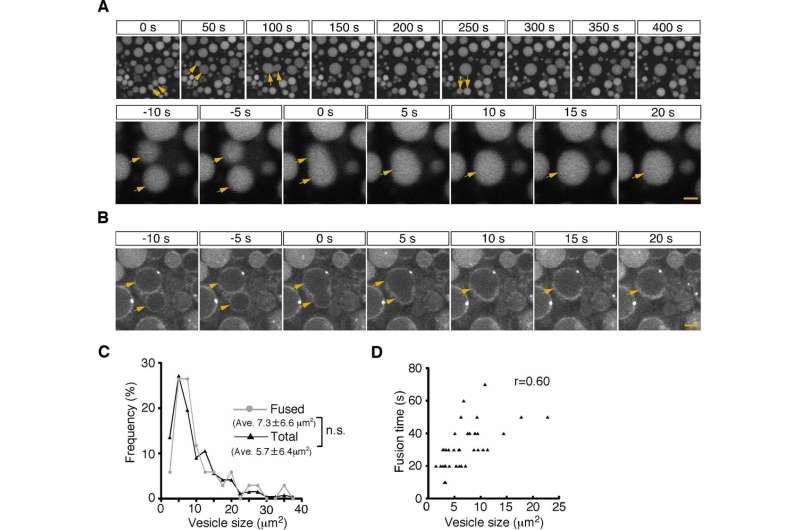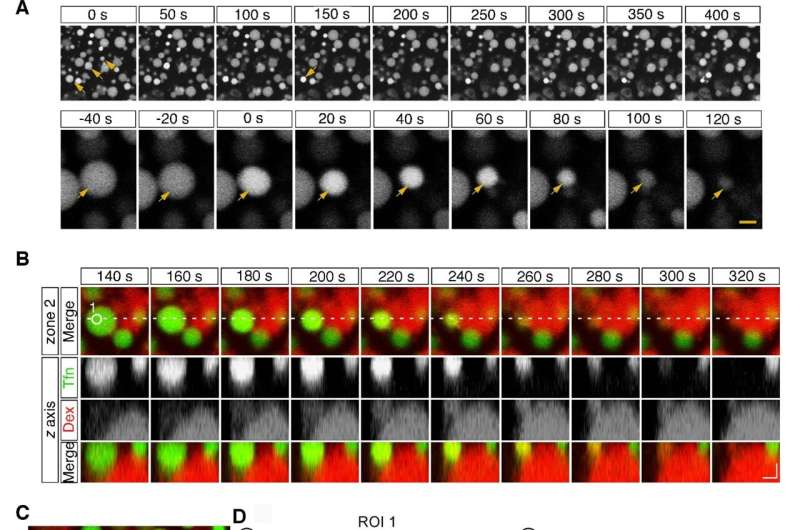This article has been reviewed according to Science X's editorial process and policies. Editors have highlighted the following attributes while ensuring the content's credibility:
fact-checked
peer-reviewed publication
trusted source
proofread
Researchers discover two vesicle fusion mechanisms while studying vesicle movement in living cells

Cells intake substances from the outside world by encapsulating them in vesicles called endosomes, which are subsequently transported throughout the cell. During the transport process, vesicles fuse with other intracellular organelles. However, observing this process is challenging in many cells due to their small size and the complexity of underlying regulatory mechanisms.
In a new study published in eLife, the researchers focused on the outermost visceral endoderm cells of mouse embryos. By labeling endosomes with fluorescent markers, they successfully observed the fusion process under a microscope.
They identified two distinct modes of endosomal fusion: homotypic fusion, where two endosomes fuse rapidly to form a single vesicle, and heterotypic fusion, in which lysosomes slowly absorb endosomes.

In addition, a mathematical analysis of the vesicle fusion process using a mechanical model of the vesicle membrane revealed that the vesicle size determines the fusion mode: homotypic fusion occurs in small vesicles and heterotypic fusion happens in large ones. Moreover, the application of fluctuating forces to the vesicle membrane facilitated homotypic fusion even in large vesicles.
The binding of endosomes to the cytoskeletal protein called actin, which is believed to generate these fluctuating forces, appears to promote homotypic fusion. Furthermore, cofilin, which promotes actin turnover, and myosin, which interacts with actin, were crucial for vesicle fusion.
Using this observation system, the researchers expect to elucidate the regulatory mechanisms controlling the processes of intracellular vesicle fusion and trafficking.
More information: Seiichi Koike et al, Actin dynamics switches two distinct modes of endosomal fusion in yolk sac visceral endoderm cells, eLife (2024). DOI: 10.7554/eLife.95999
Journal information: eLife
Provided by University of Tsukuba















